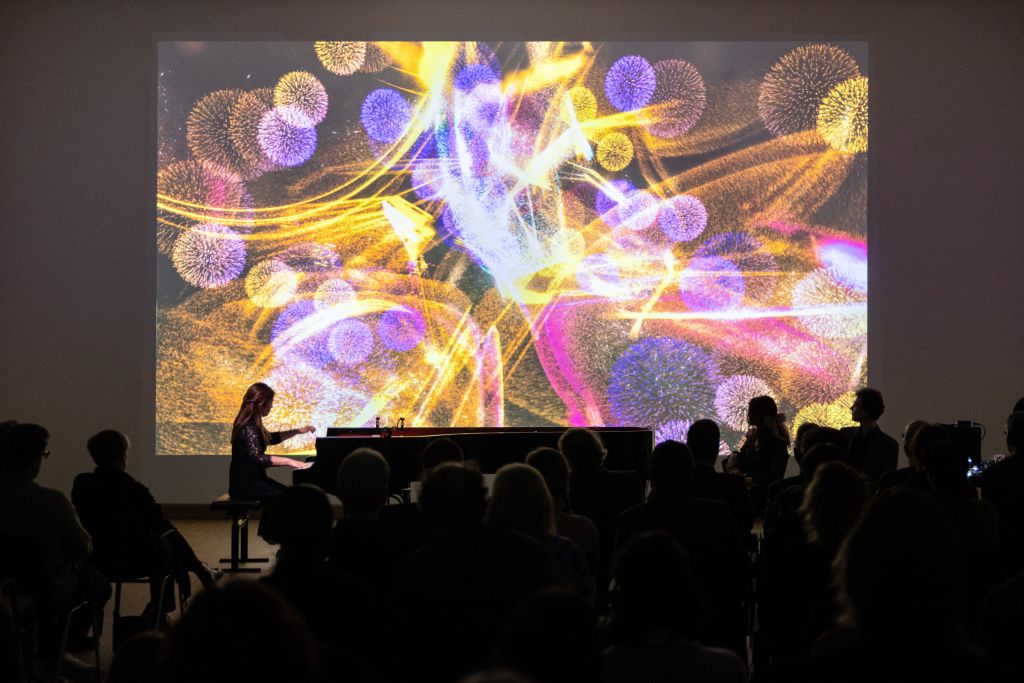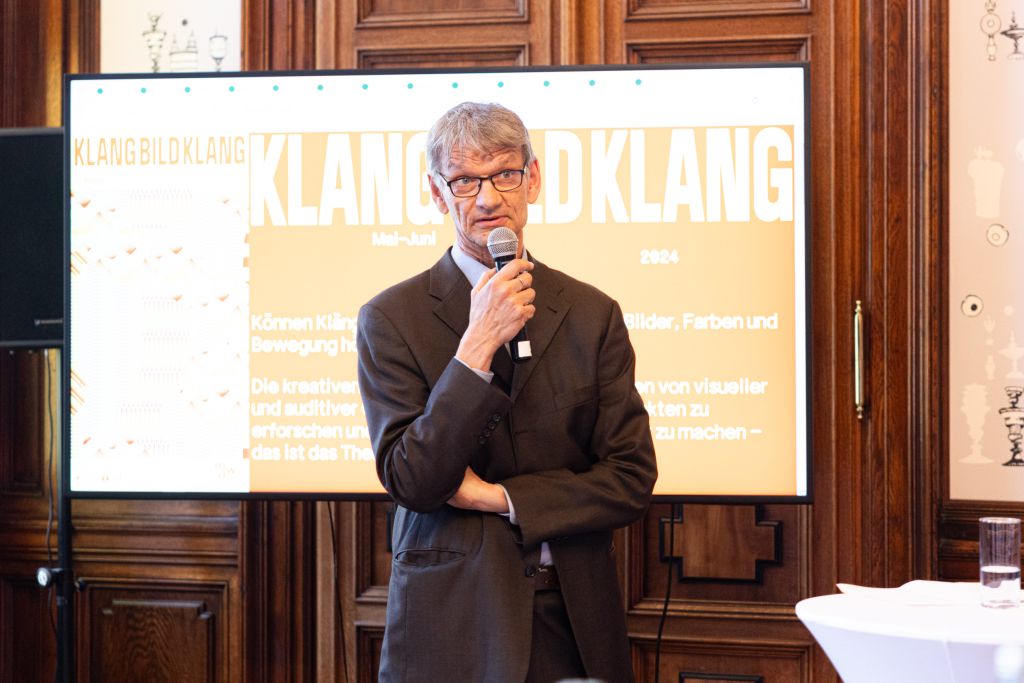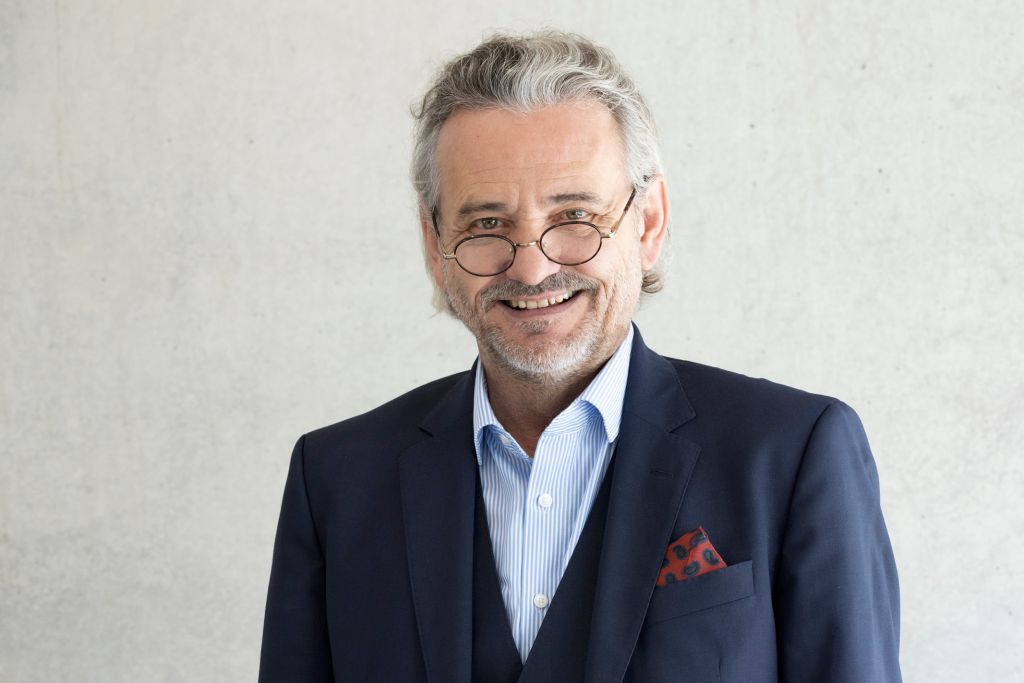Looking Ahead to the First KlangBildKlang Festival
A hallmark of the mdw is the broad range of art forms and pedagogically oriented mediation formats that make their home here. And during this May and June, the unifying aspects of this diversity as well as interfaces and inspiring interconnections between the various artistic genres will be the overarching theme of the festival KlangBildKlang.

The idea for this transdisciplinary project came from Dietmar Flosdorf, a member of the teaching faculty at the Department of Music Education Research and Practice and the founder of the subject area “Music in Dialogue”. An essential aspect of music mediation is creating spaces that open up new modes of perception and mutual enrichment to everyone involved. It was in this spirit that Flosdorf succeeded in sparking the interest of Johannes Meissl, Vice Rector for International Affairs and Art, in his proposal to launch an interdepartmental initiative centred on synaesthesia and audio-visual interaction that would lend expression to mdw students’ and teachers’ creativity. The Rectorate subsequently pledged its support for the realisation of this undertaking, whereupon Johannes Meissl set about working with the project team to broaden the overall project’s radius. The networking that this entailed aimed to bring together not only the mdw’s individual departments but also external cooperating partners such as the Konzerthaus, the Künstlerhaus, the University of Applied Arts, and social institutions run by the City of Vienna.

The next step was an informational mailing that invited the mdw’s entire faculty to integrate KlangBildKlang into their teaching during the summer semester of 2024. The favourable resonance generated by this offer is now borne direct witness by the over 50 artistic projects accompanied by music and art mediation activities that will be realised at various Viennese locations during May and June. “It’s great to see how many interesting projects our colleagues have put together on their own and the ideas that have been contributed. Moreover, every single KlangBildKlang event also contributes to the visibility of the mediatory level both in-house as well as externally,” is Dietmar Flosdorf’s positive assessment. In other words: this festival series’ broad-based portfolio seeks to spark interest in the arts and culture among people of all ages and across all social groups—entering into exchange with broader society in the simplest and most accessible way possible, touching people and providing impulses for them to maximise their own creative potential. To Vice Rector Meissl’s mind, this makes KlangBildKlang “a prime example of our strategic orientation as an internationally leading university specialised in music and the performing arts at large, which is toward uniting artistic excellence and performative innovation with inclusivity and accessibility for broad swaths of society in our city.” The aspect of social responsibility and social efficacy is likewise underscored by Gerda Müller, Vice Rector for Organisational Development and Diversity: “Outreach projects live from interaction between the most diverse people and make possible multifaceted exchanges of experience, and it’s precisely this—which, in my view, is of unbelievable benefit to everyone involved—that we see reflected in KlangBildKlang.”

On the substantive level, the range of possibilities is quite broad. Classical music, jazz, pop, rock, and experimental sounds as well as improvisation will interact with visual artworks, architecture, spoken drama, dance, digital animation, and artificial intelligence. In various formats of presentation, sounds will manifest both audibly and visibly so as to facilitate a multidimensional experience of music that conveys a sense of the astonishingly close proximity in which the individual art forms are situated. Visual perceptions of colours can trigger the production of sounds, while auditory perceptions of music can transform themselves into painterly impressions—with both senses on an equal footing and open to all sides. This intriguing overall context will be further enhanced by the diverse range of venues slated to host KlangBildKlang’s various events. To this end, the mdw is cooperating with numerous renowned cultural institutions, new and rather unusual playing and performing venues, and cultural initiatives such as CAPE 10.
Also quite deserving of mention are KlangBildKlang’s accompanying academic offerings, one of which will be the mdw’s first-ever research-oriented spring school. Moreover, various mdw research departments are and/or will be involved in preparing, carrying out, and reflecting upon the festival and its events. KlangBildKlang’s final concert will take place on 22 June in the Great Hall of the Wiener Konzerthaus, where the mdw’s Webern Symphonie Orchester will perform Wassily Kandinsky’s “historic” synaesthetic translation of Modest Mussorgsky’s Pictures at an Exhibition (as arranged by Maurice Ravel) under the baton of Andrés Orozco-Estrada. This staged production, which will feature live interaction with digital media, promises a wholly unique synthesis of musical, creative, and technical prowess. Also part of this programme will be four premières of three-to-five-minute audio-visual works by teams comprised of mdw students and students from the Digital Design class at the St. Pölten University of Applied Science that emerged as the winners of a preliminary composing competition.
Are there any ideas for further transdisciplinary mdw projects that might be realised as reverberations of this festival? According to Vice Rector Meissl, the intent is to use the experiences gained from KlangBildKlang as a basis for enhanced and more regular inter- and transdisciplinary practice both within the mdw and in cooperation with external institutions and stakeholders. And Dietmar Flosdorf, for his part, sees an opportunity to continue working with the contacts made through KlangBildKlang to develop lively dialogue and future cooperative projects that will be inspiring and also place the mdw’s great diversity firmly in the spotlight of public attention.

